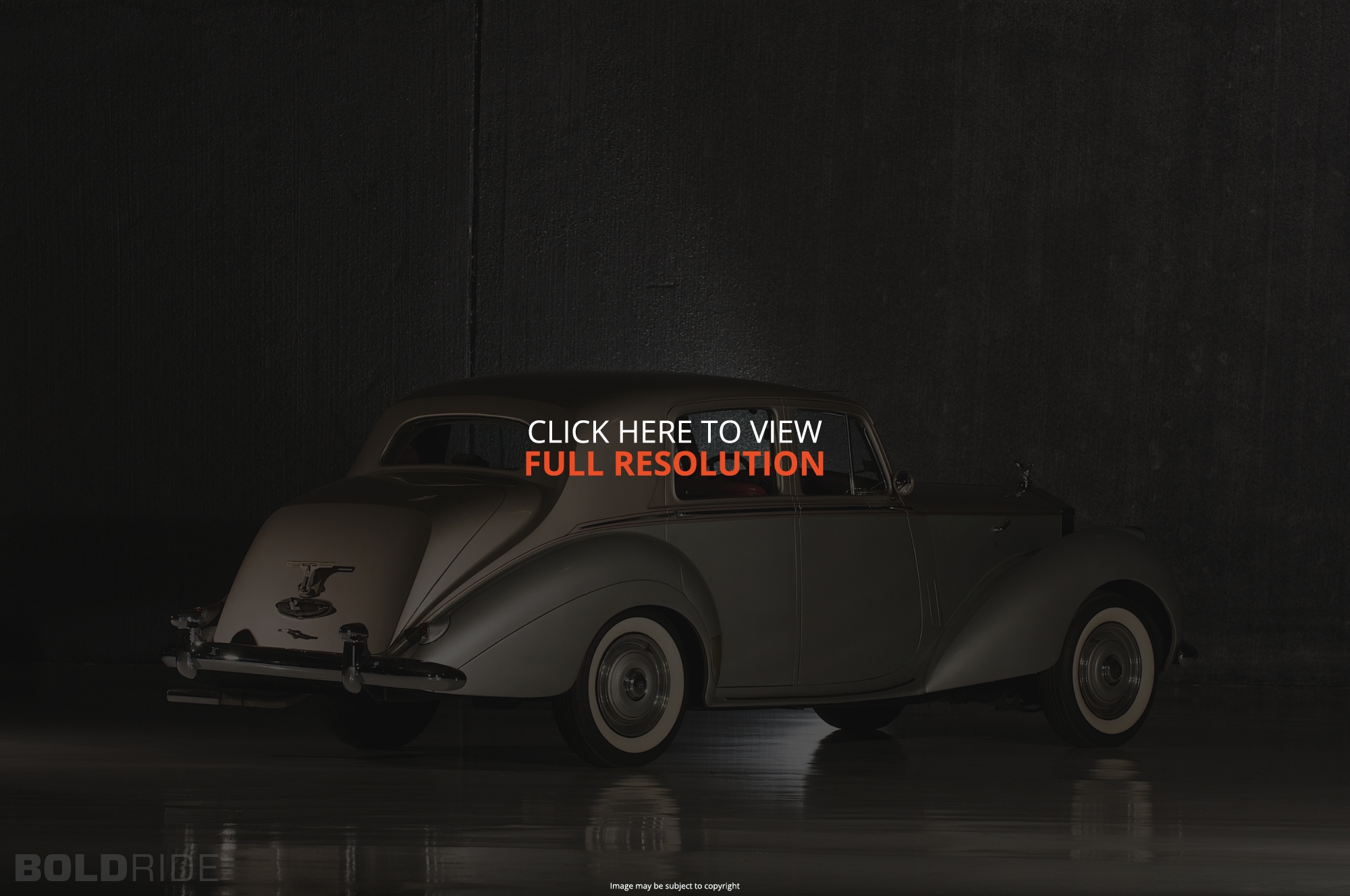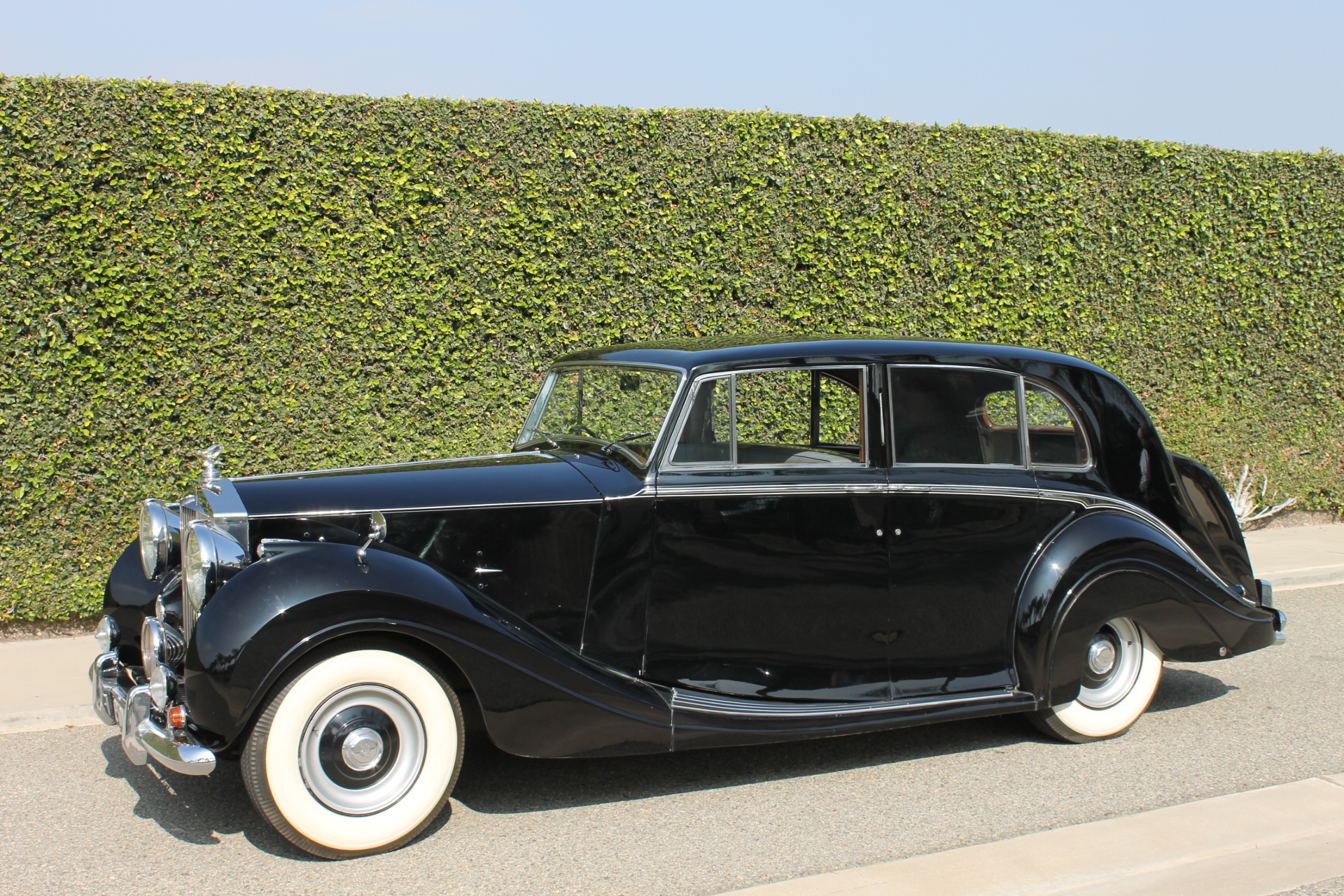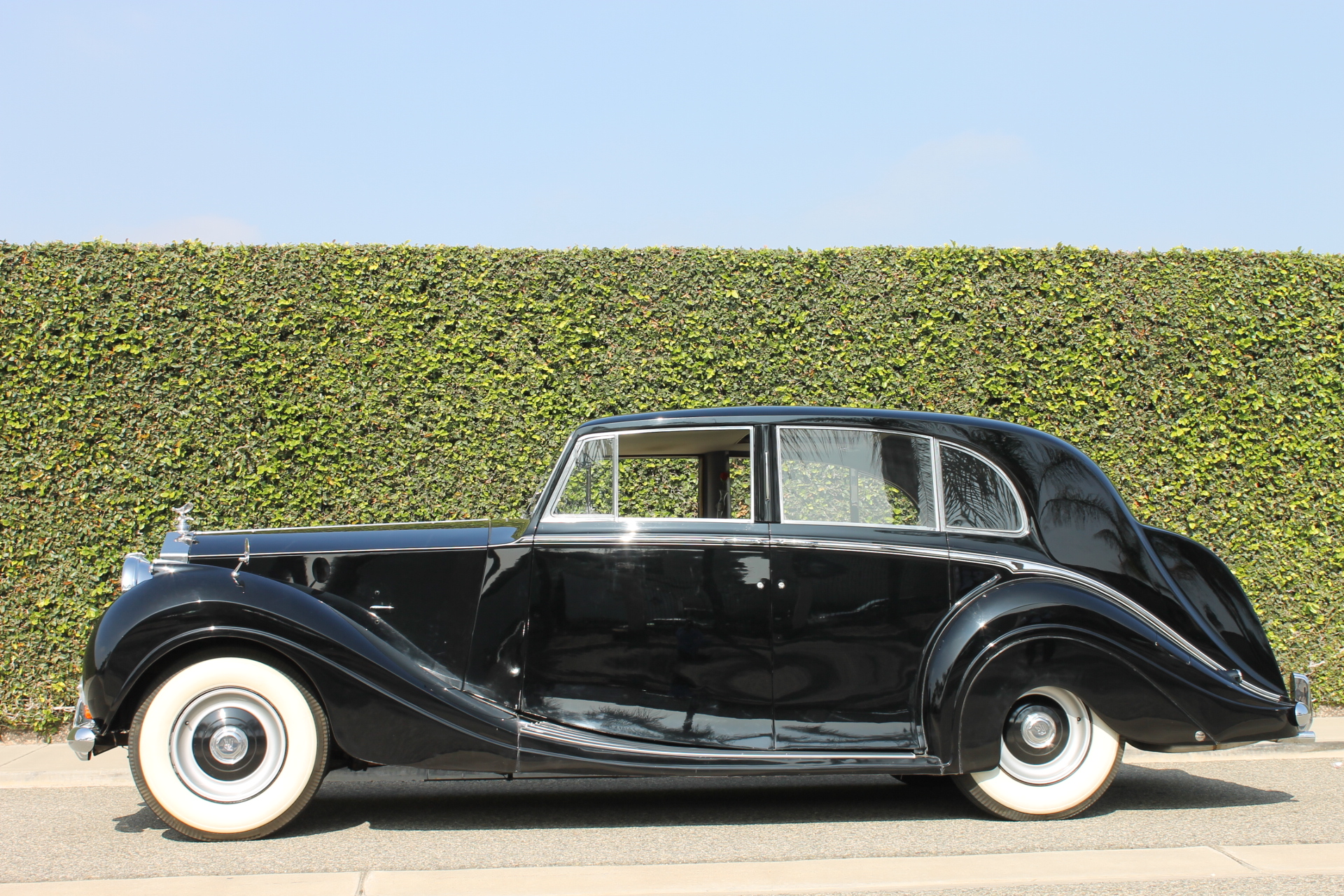Imagine a time when craftsmanship was truly king, when every curve and every detail on a motor car spoke volumes about dedication and luxury. That, you know, is the spirit of the 1954 Rolls Royce. This particular year, a rather significant one for many reasons, saw Rolls-Royce continuing its tradition of creating some of the most refined and sought-after vehicles on the planet. For anyone with a love for classic automobiles, the mention of a 1954 model often brings to mind a picture of grace and unparalleled engineering.
There's something quite special about a car from this period, isn't there? The 1950s were, in a way, a turning point for the automotive world, and Rolls-Royce, typically, stood right at the forefront of luxury. These cars weren't just about getting from one place to another; they were a statement, a reflection of a certain lifestyle, and a testament to the finest materials and build quality available. It’s almost like they were rolling works of art, you could say.
Today, the allure of the 1954 Rolls Royce remains incredibly strong. Collectors and enthusiasts worldwide still admire these vehicles for their beauty, their quiet strength, and their lasting legacy. If you're curious about what made these cars so special, or perhaps you're considering adding one to your own collection, then this discussion will, you know, shed some light on why they continue to captivate hearts decades later.
Table of Contents
- The Year 1954: A Glimpse into its World
- The Rolls-Royce Legacy: What Made It Special
- Models of the Era: The Silver Dawn and Beyond
- Design and Craftsmanship: A Masterpiece on Wheels
- Driving Experience: More Than Just a Ride
- Collecting a 1954 Rolls Royce Today: Value and Considerations
- Maintaining a Classic: Tips for Owners
- Frequently Asked Questions About the 1954 Rolls Royce
The Year 1954: A Glimpse into its World
The year 1954 was, you know, a common year that began on a Friday, according to the Gregorian calendar. It was a time of significant happenings across the globe, shaping the future in many ways. While Rolls-Royce was busy crafting its luxurious motor cars, the wider world was also experiencing moments that would become part of history. It's rather interesting to consider the backdrop against which these magnificent vehicles were introduced.
For instance, in the world of sports, 1954 saw some truly memorable events. On April 23rd of that year, Hank Aaron, a name synonymous with baseball greatness, hit the first home run of his major league career. This was, basically, a moment that set the stage for a legendary journey, as he would later break Babe Ruth's home run record two decades later. So, that's a pretty big deal in sports history.
Another iconic sports moment from 1954 involved Willie Mays, the New York Giants center fielder. During Game 1 of the World Series, he made a truly remarkable defensive play on a ball hit by Vic Wertz of the Cleveland Indians. This catch, often called "The Catch," is still talked about today, demonstrating the incredible athleticism of the time. You know, these were moments of pure human achievement.
Beyond sports, the year 1954 also contributed to our language. It was in this year that the term "mondegreen" was coined by writer Sylvia Green. This term refers to misunderstood lyrics, originating from Green's own mishearing of a song lyric from her childhood. It’s a little detail, but it shows how much was happening culturally. This was, in some respects, a very dynamic period.
The political landscape was shifting too, with legal battles challenging established norms and early explorations into space becoming a topic of discussion. Disruptive innovations in consumer finance were also starting to lay crucial groundwork for the future. So, the 1954 Rolls Royce didn't just appear; it arrived into a world that was, arguably, buzzing with change and new possibilities, a very interesting time indeed.
The Rolls-Royce Legacy: What Made It Special
Rolls-Royce, as a name, has always stood for something quite exceptional. The company's commitment to quality and refinement is, you know, almost legendary. Since its beginnings, the marque has consistently produced cars that are not just modes of transport but symbols of prestige and engineering excellence. The 1954 models carried this tradition forward with great pride.
What truly set Rolls-Royce apart was its dedication to creating vehicles that were, basically, whisper-quiet and incredibly smooth to drive. This wasn't just about powerful engines; it was about the meticulous balance of components, the careful soundproofing, and the precision of every moving part. Owners expected a serene experience, and Rolls-Royce certainly delivered on that promise, you could say.
The brand's reputation was also built on its bespoke approach. While there were standard models, many Rolls-Royces were, in fact, customized to the specific desires of their owners. This meant that no two cars were exactly alike, adding to their unique charm and personal connection. It's a little bit like owning a tailored suit, but for your car.
Another aspect of the Rolls-Royce legacy is its durability. These cars were built to last, often outliving their original owners and continuing to provide reliable service for decades. This longevity speaks volumes about the quality of materials used and the high standards of assembly. That, you know, is a mark of true craftsmanship that stands the test of time.
The company's focus on chauffeur-driven comfort was also a key part of its appeal. While some owners enjoyed driving their Rolls-Royce, many preferred to be driven, experiencing the ultimate in passenger luxury. The rear seats were designed for maximum comfort, offering ample legroom and plush surroundings. So, it was a very different kind of driving experience for many.
Models of the Era: The Silver Dawn and Beyond
In 1954, the primary Rolls-Royce model in production was the Silver Dawn. This car represented a significant step for the company, as it was the first Rolls-Royce model to be offered with a standard factory-built body. Before this, most Rolls-Royce chassis were sent to independent coachbuilders for their unique bodywork. So, this was, in some respects, a new direction.
The Silver Dawn, introduced in 1949, was a refined and elegant car, sharing its basic design with the Bentley Mark VI. It featured a 4.5-liter, six-cylinder engine, which provided smooth and ample power for comfortable cruising. This engine was, typically, known for its quiet operation and reliability, qualities that were very important to Rolls-Royce customers.
While the factory-built body was standard, independent coachbuilders still offered their own custom designs for the Silver Dawn chassis. This meant that even within the Silver Dawn range, there was a fair amount of variety in terms of appearance. You could find cars with unique limousine bodies, sleek drophead coupes, and other custom styles. It's almost like a canvas for different artists, you know.
The Silver Dawn was, generally, produced until 1955, making the 1954 models part of its later production run. These later cars often benefited from minor refinements and improvements learned throughout the production period. They represented the culmination of the Silver Dawn's development, offering a highly polished driving and riding experience. That, is that, a really mature design for its time.
It's worth noting that alongside the Rolls-Royce Silver Dawn, Bentley produced its equivalent model, the R-Type. While mechanically similar, the Bentley was positioned as a more driver-focused car, whereas the Rolls-Royce maintained its image of ultimate luxury and chauffeur-driven comfort. So, there was a subtle distinction, even though they shared many components, basically.
Design and Craftsmanship: A Masterpiece on Wheels
The design of the 1954 Rolls Royce, particularly the Silver Dawn, speaks to a specific era of automotive styling. It wasn't about flashy lines or aggressive looks; it was about understated elegance and timeless proportions. The car had a dignified presence, with a long bonnet, flowing fenders, and a rather stately grille, crowned, of course, by the iconic Spirit of Ecstasy mascot.
Inside, the craftsmanship truly shone. The cabins were, very, luxurious, featuring extensive use of high-quality wood veneers, often polished to a deep sheen. The leather upholstery was soft and supple, typically hand-stitched with great care. Every surface that an occupant might touch felt substantial and well-made. It's a little bit like stepping into a finely appointed drawing-room.
The attention to detail was, you know, quite extraordinary. From the precise fit of the doors to the smooth operation of the switches and controls, everything was designed to convey a sense of quality and durability. Even the smallest components were often crafted from solid materials, rather than cheaper alternatives. So, there was no cutting corners, you could say.
The instrument panel, too, was a work of art, with clear, easy-to-read gauges set in a beautiful wooden dash. The steering wheel felt substantial in the hands, offering a good connection to the road despite the car's considerable size. This focus on driver comfort and control, even in a chauffeur-oriented vehicle, was, basically, a hallmark of Rolls-Royce design.
And let's not forget the paintwork. Rolls-Royce cars were known for their deep, lustrous finishes, achieved through multiple layers of paint and extensive hand-polishing. This created a mirror-like surface that truly brought out the car's elegant lines. It's almost as if the car was glowing from within, you know, a very special effect.
Driving Experience: More Than Just a Ride
To truly appreciate a 1954 Rolls Royce, you really have to experience it, either from behind the wheel or, perhaps, from the passenger seat. The driving experience is, very, different from modern cars. It's not about raw speed or aggressive handling; it's about a serene, comfortable, and dignified journey. The car glides, rather than rushes, down the road.
The engine, a straight-six, offers smooth and consistent power delivery. It’s not about quick acceleration, but about effortless momentum. The automatic transmission, which became standard on later Silver Dawn models, shifts imperceptibly, contributing to the overall sense of calm. So, you barely notice the gears changing, which is quite impressive for the era.
The ride quality is, typically, exceptionally smooth, thanks to a well-engineered suspension system designed to absorb road imperfections. Bumps and potholes that might jar a smaller car are, basically, simply floated over by a Rolls-Royce. This makes for a remarkably comfortable journey, especially on longer trips. You know, it's like riding on a cloud, in a way.
Steering is, perhaps, heavier than what modern drivers are used to, requiring a bit more effort, especially at low speeds. However, once moving, the car tracks true, and the steering provides a good sense of connection to the road. It's a driving experience that rewards a calm and measured approach, rather than a hurried one. That, is that, part of its charm.
Noise insulation was a priority for Rolls-Royce, and it shows. The cabin of a 1954 model is remarkably quiet, shielding occupants from road noise, wind noise, and even the sounds of the engine itself. This allows for easy conversation or quiet contemplation, making every journey a peaceful one. So, it's a very tranquil environment inside.
Collecting a 1954 Rolls Royce Today: Value and Considerations
For collectors, a 1954 Rolls Royce represents a significant piece of automotive history and a truly desirable classic car. Their enduring appeal means they often hold their value well, and in some cases, can appreciate over time. However, acquiring one requires, you know, careful consideration of several factors beyond just the initial purchase price.
The condition of the car is, very, important. A well-maintained example with original components and a documented history will command a higher price than one that requires extensive restoration. Look for cars with complete service records and, basically, a clear provenance, which means knowing its past ownership. That, is that, a big factor in its worth.
The specific model and coachwork can also affect value. While the factory-bodied Silver Dawn is common, a car with custom coachwork from a renowned builder like Hooper or Park Ward might be, arguably, more rare and thus more valuable. These unique bodies add to the car's individuality and historical significance. So, it's worth doing your research on the body style.
Market trends play a role too. The classic car market can fluctuate, but vehicles of this caliber often maintain a steady interest among enthusiasts. It's always a good idea to consult with classic car valuation experts or attend reputable auctions to get a sense of current market prices. You can often find information on historical sales to guide your expectations. For current values, you might check a well-known classic car auction site for similar models, like Hagerty's Valuation Tools.
Beyond the purchase price, potential owners should consider the ongoing costs of ownership. These include insurance, storage, and, of course, maintenance. Parts for classic Rolls-Royces can be specialized and, naturally, expensive, and finding skilled mechanics familiar with these older vehicles is essential. It's a little bit like owning a piece of history that needs constant care.
If you're interested in learning more about the history of Rolls-Royce models, you can always learn more about Rolls-Royce on our site. And for details on other luxury vehicles, you might want to visit our luxury vehicle page.
Maintaining a Classic: Tips for Owners
Owning a 1954 Rolls Royce is, basically, a commitment, and proper maintenance is key to preserving its value and ensuring its continued enjoyment. These cars were built to last, but they still require regular care and attention. Ignoring maintenance can lead to costly repairs down the line, so it's very important to stay on top of things.
First and foremost, find a mechanic who specializes in vintage Rolls-Royce or Bentley vehicles. These cars have unique systems and components that differ significantly from modern automobiles. A general mechanic might not have the specific knowledge or tools needed. So, you really need someone with the right expertise, you know.
Regular oil changes and fluid checks are, typically, essential. Use the correct type of oil and fluids as specified in the original owner's manual or by a specialist. The engine and transmission are robust, but they rely on clean lubricants to perform their best. It's a little bit like giving your car the right nourishment.
Pay close attention to the braking system. Older cars often have drum brakes, which require different maintenance than modern disc brakes. Ensure they are regularly inspected and adjusted for safe operation. That, is that, a critical safety aspect you don't want to overlook.
The electrical system in older cars can sometimes be a source of issues. Check wiring for signs of wear or corrosion, and ensure all lights and gauges are functioning correctly. Keeping the battery in good condition is also, naturally, very important, especially if the car is not driven frequently. So, a healthy electrical system keeps everything running smoothly.
Finally, consider proper storage. If the car isn't driven daily, store it in a dry, climate-controlled environment to prevent rust and deterioration of interior materials. Using a car cover can also protect the paintwork from dust and scratches. It's almost like providing a comfortable home for your cherished vehicle, you could say.
Frequently Asked Questions About the 1954 Rolls Royce
What makes the 1954 Rolls Royce special?
The 1954 Rolls Royce, especially the Silver Dawn model, is special for its blend of traditional craftsmanship and its position as one of the first Rolls-Royce cars with a standard factory body. It offered, you know, unparalleled luxury, a whisper-quiet ride, and incredible build quality for its era. It's a symbol of post-war British luxury and engineering prowess, basically.
How much is a 1954 Rolls Royce worth today?
The value of a 1954 Rolls Royce can, actually, vary significantly based on its condition, originality, documented history, and specific coachwork. Well-preserved or expertly restored examples with desirable features will command higher prices. It's best to consult current classic car market data and valuation experts for an accurate assessment. So, prices can really range quite a bit.
What were some notable events in 1954 when this car was made?
The year 1954 was, very, eventful. In sports, Hank Aaron hit his first major league home run, and Willie Mays made his famous "The Catch" in the World Series. Culturally, the term "mondegreen" was coined. There were also, you know, significant legal battles and early discussions about space exploration happening. It was a time of many important shifts, you could say.



Detail Author:
- Name : Casimir Spinka
- Username : becker.rozella
- Email : janis.leannon@bode.biz
- Birthdate : 1986-08-08
- Address : 6071 Kiera Brook Suite 579 Sporerside, CT 47214
- Phone : 1-425-821-9905
- Company : Mayer, Schneider and Kirlin
- Job : Electrical Sales Representative
- Bio : Consectetur corporis qui eum voluptas ut corporis culpa. Exercitationem nisi et eius et perspiciatis eveniet. Dolor et minima adipisci laborum magni.
Socials
tiktok:
- url : https://tiktok.com/@kim6487
- username : kim6487
- bio : Et distinctio minima cupiditate porro culpa cupiditate.
- followers : 1462
- following : 837
twitter:
- url : https://twitter.com/hoegerk
- username : hoegerk
- bio : Consequatur quia reiciendis quas quam impedit. Facilis totam modi aut tempore laudantium laudantium. Maiores illo sapiente quia non nihil voluptatem.
- followers : 6210
- following : 632